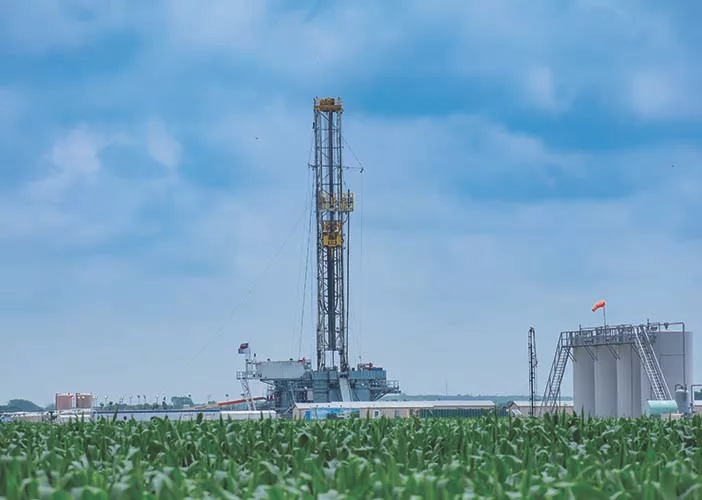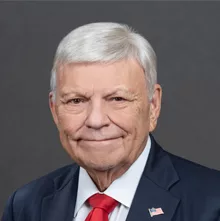As of this writing, Jerome Powell, chairman of The Federal Reserve, anticipates additional interest rate increases that could be higher than the quarter points previously forecasted. He emphasizes that the number of increases would be expanded until significant progress on the reduction of inflationary pressures is experienced.
The impact of the Powell initiatives on the PVF industry will begin to be felt as we see the second quarter unfold. The extent of the negative impact on our industry has yet to be determined as we enter the second quarter of 2023.
In addition to the Powell policy, an additional headwind facing the PVF industry is the peaking of the shale boom for oil production. Frackers are hitting fewer big gushers in the Permian Basin. Shale companies’ largest and best wells are producing less oil, says The Wall Street Journal.
Domestic oil production output grew last year at one-third of the annual rate seen from 2017-2019 — shale’s most prolific years — and has not caught up with pre-COVID-19 pandemic levels.
The slowdown is mostly because of investor pressures on companies to curtail spending and limit growth in favor of generating higher returns.
Additionally, growth is constrained by federal energy policies restricting land available for lease to develop new fields to offset the maturing fields in the Permian and Delaware basins.
The decline in the growth rate is leading some in the industry to give a doomsday scenario for the shale era. Not so, despite the doomsday soothsayers on shale oil’s demise: the main bottleneck may be pipeline capacity to the main export terminals out of the Gulf Coast.
U.S. shipping lanes cannot facilitate very large crude carriers (VLCCs) that can carry about 2 million barrels of light crude.
Enterprise Products Partners (EPP) has moved one step closer to receiving the required permits for its Sea Port Terminal (SPOT) under the Deepwater Port Act.
SPOT, a fixed-platform deepwater port in the Houston area, will be capable of filling VLCCs and other tankers at a rate of up to 85,000 barrels/hour.
A final decision is expected this year after a four-year process for EPP. This is why we need more regulatory reform and more accountability from the federal agencies who are responsible for issuing these permits.
Arctic Drilling, Pipeline Expansion
The Biden administration is poised to approve the massive Willis Oil Drilling Project in the Alaskan Arctic. A compromise expected to be put forth by the Biden administration clears the way for ConocoPhillips to proceed with the development of three drilling sites, reduced from the five it originally proposed.
The decision is likely to appease the oil and gas industry, which contends that Willow meets President Joe Biden’s demands that operators pump more oil to put a lid on energy prices.
ConocoPhillips will spend between $100 million and $400 million in 2023 on Willow if the company receives adequate project approval.
Kinder Morgan’s (KMI) net income was up 5 percent, and expansion projects are on pace. Land acquisitions, the procurement of materials and construction contractors continue to progress as planned for the Permian Highway pipeline expansion project.
In addition, KMI is moving forward with the previously approved 2 billion cubic feet/day Evangeline Pass project. The two-phase project includes modifications and enhancements to portions of the Tennessee Gas Pipeline and Southern Natural Gas systems in Mississippi and Louisiana.
As of this writing, the price of WTI is $76.74/barrel and Brent crude is $82.73/barrel.
Maintenance Projects
On the gas side of the energy equation, Industrial Info is tracking around $365 million slated for 90 maintenance-related projects at natural gas-fired power plants across the United States that are scheduled to begin in the second quarter.
Lotus Infrastructure, a subsidiary of Starwood Capital Group, has a trio of maintenance outages at natural gas combined-cycle units in the Northeast: a 788-megawatt (MW) unit at its Marcus Hook Energy Center near Philadelphia; a 646-MW unit at its Fairless Energy Center in Fairless Hills, Pa; and 102 MW at its cogeneration plant in Syracuse, N.Y. Each project is expected to take approximately a month to complete.
NextEra Energy is scheduling four maintenance projects for the second quarter throughout Florida: 1.28 gigawatts, Block 1 at the West County Energy Center in Loxahatchee; 376 MW, Unit 3 at the Manatee Power Station in Parrish; 376 MW, Unit 5 at the Turkey Point Power Station in Homestead; and 93 MW, Unit 5 at the Gulf Clean Energy Center in Pensacola. Each project is expected to take approximately a month to finish.
Pricing for domestic carbon-steel butt-welding fittings and forged-steel flanges remain stable as we enter the second quarter; no change is anticipated during the quarter.
However, with all the instability in the global and domestic markets, it is wise to communicate regularly with your manufacturers/suppliers to avoid any surprises regarding pricing and/or availability of material.
LNG Boom to Strain Labor Market
Matthew Fitzsimmons, senior vice president at Rystad Energy, states: “As the U.S. attempts to quench the world’s thirst for [liquified natural gas], the Gulf Coast is set to undergo a further boom of LNG project sanctioning over the next few years. The pace of this growth far exceeds what the region has experienced in the past and will significantly strain the labor market.”
He explains that the Gulf Coast LNG project capital expenditure will jump from more than $5 billion in 2022 and approaching $15 billion by 2025; construction activity is forecast to nearly triple as a result.
“LNG developers will struggle to fill vacant roles without increasing salaries considerably, and these higher rates are likely to be felt on the operator’s bottom line,” Fitzsimmons says.
PVF Roundtable News
The Weldbend Corp. and Ferguson Industrial are the key sponsors for the annual PVF Roundtable Golf Tournament and invite you to join them on May 8 in setting another record turnout for one of the PVF Roundtable Charitable Foundation’s premier fund-raising events.
The tournament will be held at the Clubs of Kingwood and Deerwood in Kingwood, Texas. All five courses will be in play: Island, Marsh, Lake, Forest and Deerwood. Please refer to www.pvf.org for additional details.
The next networking meeting of the PVF Roundtable will be held on May 9, following the golf tournament on the 8th, from 4-7:30 p.m. CDT at The Bell Tower on 34th, Houston.
This year, The PVF Roundtable will exceed $2 million in total scholarships that have been distributed by the PVF Roundtable Charitable Foundation since its inception to universities and trade schools for the development of a skilled labor force to meet the increasing demands of the PVF industry.
The PVF Roundtable golf tournament, the TroutBlast and the Weldbend-sponsored October 2022 dinner were the major fund-raising events held by the foundation during 2022, with the funds raised dedicated to the PVF Roundtable Scholarship Programs.
As a member of the board, and I speak for all members, we thank you for your participation in these events.
With the uncertainties in the current turbulent PVF market, the networking meetings are a unique venue for you and your associates to network with your PVF peers. These events provide the platform to share information, discuss pertinent issues, meet new contacts, develop long-lasting friendships and pursue new opportunities in the industry.





